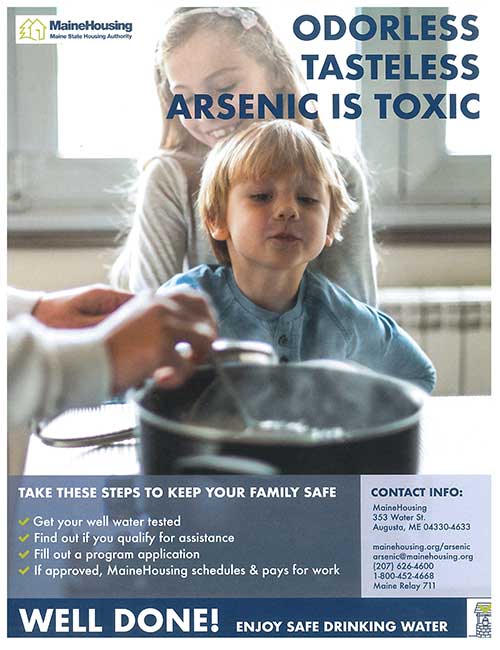Public Health Information
Tick Reference Guide DHHS Fresh Fruit and Vegetables Food Safety Guide for Farming
DHHS Fresh Fruit and Vegetables Food Safety Guide for Farming
Free Diabetes prevention program
Rabies PEP Algorithm for Providers
Rabies PEP Reporting Form 2015
Lyme and Tickborne Disease Information
Maine CDC website
Browntail Moth newsletter- January 2021
Participate in Free “Better Health Now with Pain” Workshop
PFAS Information
Any updated PFAS information China receives will be posted here.
We understand that you may have questions and concerns regarding the DEP investigation.
General questions about the investigation by DEP should be directed to David Madore, Deputy Commissioner and Communications Director, David.Madore@maine.gov, 207-287-5842.
You can also visit DEP webpage located at: http://www.maine.gov/dep/spills/topics/pfas/index.html.
Any questions about an investigation by DEP at a specific property should be directed to Jim Pollock at 207-592-8343 or jim.c.pollock@maine.gov.
If you have agricultural-related questions, please contact Nancy McBrady, Director of the Bureau of Agriculture, Food and Rural Resources, Nancy.McBrady@maine.gov, 207-287-7522.
Browntail Moth Update
Much has happened this week including observations of the first caterpillars pupating at all of our monitoring sites. Again, this is a couple of weeks earlier than in the past (June 26th last year), which is not surprising. Growth of caterpillars has been advanced this year likely due to a warmer spring which allowed them to emerge and begin feeding earlier. At this stage, insecticide control operations should be wrapped up for the year. It is a far better investment, and a better choice for the environment, to target controls for the generation that will begin to develop in August. These control measures should include removing and destroying winter webs where possible and management with insecticides if chosen. We recommend working with licensed pesticide applicators for the latter approach.
What areas of Maine are most at risk?
Most areas of Maine especially along the coast and inland that have significant host tree populations are at risk. In 2021 overwintering browntail moth webs were found in every county in Maine. Highest populations, as reflected by mapped damage by aerial survey, are found in Androscoggin, Cumberland, Kennebec, Knox, Lincoln, Sagadahoc and Waldo Counties.
What areas are at risk this year that were not heavily infested in the past years?
Our aerial survey data points to increased impacts in parts of Cumberland, Kennebec, Knox and Waldo County, with late-summer damage mapped in areas where early summer defoliation was not seen. Our winter web surveys point to continued spread of the pest up the Penobscot River and I-95 corridors and in southern portions of Oxford, Franklin Somerset and Penobscot Counties. More disjunct sightings occurred in three towns in Aroostook County (Fort Fairfield, Monticello and Smyrna). Other areas where BTM was prevalent last year have spread to varying extents.
What are the most precise ways for people to know the browntail moth situation in their area?
Consulting this year’s winter web survey map will give people a general idea of what the BTM population looks like in their area. However, there is no substitute for inspecting the host trees and shrubs around places they frequent.
Late-fall through early spring: on sunny days, examine hosts for winter webs on the tips of host branches
Spring-early summer: look for the distinctive caterpillars. The white stripes characteristic of older larvae usually develop in late-May, the two orange dots towards the rear are present throughout this stage.
Early-summer through leaf fall, watch for and avoid cocoons and their remnants.
Late-summer watch for distinctive feeding and developing silk created by young caterpillars prior to overwintering
Where is the best resource to find how to protect oneself from browntail moth?



